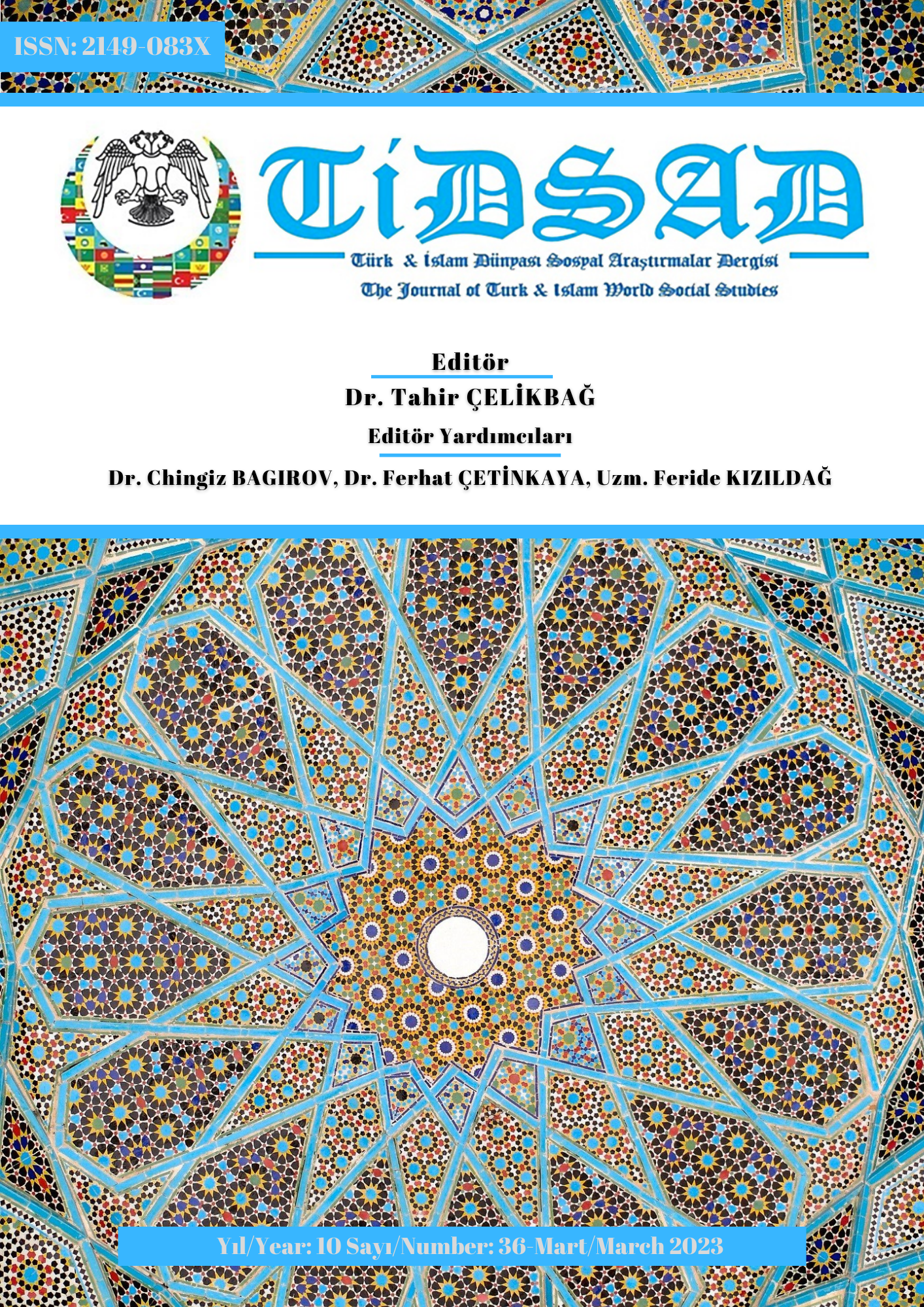Author :
Abstract
- yüzyılda yaşamış klasik Türk edebiyatı şairlerinden biri de Handânî’dir. 1539/40 yıllarında doğan Handânî, Kanunî Sultan Süleyman, II. Selim ve III. Murat dönemlerinde yaşamıştır. Şairin doğum yeri, şairlik dışında hangi işle meşgul olduğu ve ölüm tarihi hakkında herhangi bir bilgi yoktur. Mevcut verilere göre bilinen tek eseri 49 kaside, 15 mesnevi, 44 musammat, 105 gazel, 58 nazm ve 44 tuyuğdan meydana gelen divanıdır ve bu divanın tespit edilebilen dört nüshası bulunmaktadır. Daha çok dinî-tasavvufi konuların işlendiği divanda, sayı sembolizmi kapsamında belli sayılardan da bahsedildiği görülür. Söz konusu edilen sayılar sırasıyla 2, 3, 4, 5, 7, 12 ve 17 olup çalışmada dört sayısı değerlendirilmeye çalışılmıştır. İnanç sistemini sayılar üzerinden şekillendiren Pisagorcular tarafından dört sayısı, ideal bir sayı olarak nitelendirilir. Mükemmeliyetin temsili olan dört, hem dinî-tasavvufi literatürde hem de Türk kültüründe sembolik olarak yer alır. Şair tarafından bu dikkatle biri 33 beyitten, biri 101 beyitten teşekkül eden iki kasidede dört sayısı işlenmiştir. İlgili manzumelerde dörtlü terkiplere (dört mevsim, dört yön, abdestin dört farzı, dört melek, dört mezhep, dört halife, hacca gitmenin dört farzı gibi) örnekler verilerek dört sayısının önemi açıklanmış ve böylelikle sayının sembolik bir manaya sahip olduğu vurgulanmıştır. Çalışmada Handânî’nin hayatı hakkında kısaca bilgi verilerek bahsi geçen iki kasideden hareketle şairin, dört sayısını hangi yönden işlediği örnek beyitlerle ortaya konmuştur.
Keywords
Abstract
One of the classical Turkish literary poets who lived in the 16th century is Handani. Handânî was born in 1539/40 and lived during the reign of Suleiman the Magnificent Selim II, and Murat III. There is no information about the poet's place of birth, his occupation other than being a poet, and the date of his death. According to the available data, his only known work is his Divan which consists of 49 eulogies, 15 masnavi, 44 musammat, 105 ghazals, 58 verses and 44 tuyug, and there are four identifiable copies of this diwan. The diwan, which deals mainly with religious Sufi themes, also mentions certain numbers in connection with number symbolism. The numbers in question are 2, 3, 4, 5, 7, 12, and 17 respectively, and the number four was tried to be evaluated in this study. The number four is considered an idealized number by the Pythagoreans, who shaped their belief system through numbers. The four, the representation of perfection, appears symbolically in both religious-Sufic literature and Turkish culture. In this sense, the poet treated the number four in two qasidas, one of 33 and one of 101 couplets. In the relevant poems, the importance of the number four is explained by giving examples of the four compositions (four seasons, four directions, four fards of wudu, four angels, four madhhabs, four caliphs, four fards of going on pilgrimage), and thus it is high-lighted that the number has a symbolic meaning. In the study, brief information about Handani's life is given and based on the two odes mentioned, the way in which the poet handles the number four is explained with sample couplets.
